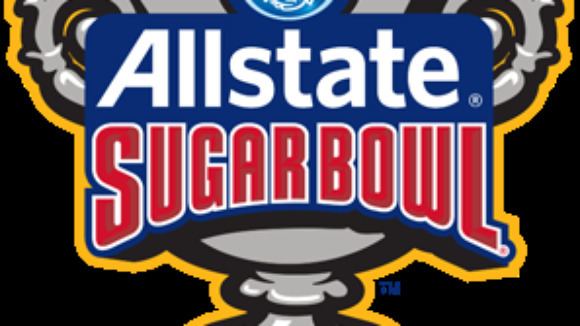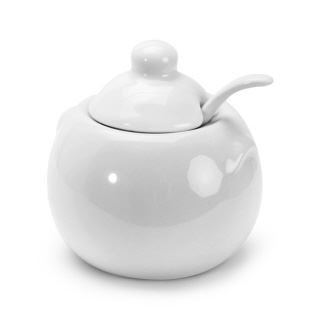Stadium Mercedes-Benz Superdome | Operated 1935–present | |
 | ||
Payout US$17,000,000 per team (As of 2014) Instances 2017 Sugar Bowl, 2016 Sugar Bowl, 2015 Sugar Bowl, 2014 Sugar Bowl, 2013 Sugar Bowl | ||
How to make pretty balloon sugar bowls
The Sugar Bowl is an annual American college football bowl game played in the Mercedes-Benz Superdome in New Orleans, Louisiana. The Sugar Bowl has been played annually since January 1, 1935, and celebrated its 75th anniversary on January 2, 2009. The Sugar Bowl, along with the Orange Bowl and Sun Bowl, are the second-oldest bowl games in the country, behind the Rose Bowl Game. The Sugar Bowl is also a member of the College Football Playoff. Presently, its official title is the Allstate Sugar Bowl after its current sponsor, the Allstate insurance company.
Contents
- How to make pretty balloon sugar bowls
- Diy super sugar bowl man vs pin 106
- History
- Game results
- Most Outstanding Players Miller Digby Award
- Broadcasting
- References
The Sugar Bowl has had a longstanding — albeit not exclusive — relationship with the Southeastern Conference (SEC) (which once had a member institution based in New Orleans, Tulane University; another Louisiana school, Louisiana State University (LSU) in Baton Rouge, is still in the SEC today). From 1950 to 1995, only once did the Sugar Bowl not feature an SEC team. That relationship has been altered over the past twenty years due to conference realignments and the emergence of a series of coalitions and alliances intending to produce an undisputed national champion in college football, but the ties between the Sugar Bowl and the SEC have persisted and have recently been strengthened. The SEC's opponent varied from year to year, but was often the runner-up of the Big 8 or SWC, or a major independent. Since 2015, The Sugar Bowl, along with the Rose, Orange, Cotton, Peach, and Fiesta bowls, is one of the "New Years Six" bowls in rotation for the College Football Playoff. It hosted a playoff semifinal following the 2014 season, and will next host one following the 2017 season. In other years, it will feature the best available teams from SEC and the Big 12 Conferences, an arrangement nearly identical with the relationship between the Rose Bowl and the champions of the Big Ten and Pac-12.

As a member of the Bowl Championship Series, the Sugar Bowl hosted the BCS National Championship Game twice (2000 and 2004). However, from the 2006 season to the 2013 season, the BCS National Championship Game had been a stand-alone event, following one week after the New Year's Day bowl games. This means that, under the now-defunct BCS format, no traditional bowl game hosted the BCS National Championship Game, but that game was played at the venue of one of those traditional major bowls, rotating amongst the four sites, including the Superdome.
The payout for the 2006 game was $14–17 million per participating team. According to Sports Illustrated, the 2007 salary for Sugar Bowl CEO Paul Hoolahan was $607,500.

Diy super sugar bowl man vs pin 106
History
In 1890, Pasadena, California held its first Tournament of Roses Parade to showcase the city's mild weather compared to the harsh winters in northern cities. As one of the organizers said: "In New York, people are buried in snow. Here, our flowers are blooming and our oranges are about to bear [fruit]. Let's hold a festival to tell the world about our paradise." In 1902, the annual festival was enhanced by adding a football game.
In 1926, leaders in Miami, Florida decided to do the same with a "Fiesta of the American Tropics" that was centered around a New Year's Day football game. Although a second "Fiesta" was never held, Miami leaders later revived the idea with the "Palm Festival" (with the slogan "Have a Green Christmas in Miami"). The football game and associated festivities of the Palm Festival were soon named the "Orange Bowl."
In New Orleans, Louisiana, the idea of a New Year's Day football game was first presented in 1927 by Colonel James M. Thomson, publisher of the New Orleans Item, and Sports Editor Fred Digby. Every year thereafter, Digby repeated calls for action, and even came up with the name "Sugar Bowl" for his proposed football game.
By 1935, enough support had been garnered for the first Sugar Bowl. The game was played in Tulane Stadium, which had been built in 1926 on Tulane University's campus (before 1871, Tulane's campus was Paul Foucher's plantation, where Foucher's father-in-law, Etienne de Bore, had first granulated sugar from cane syrup). Warren V. Miller, the first president of the New Orleans Mid-Winter Sports Association, guided the Sugar Bowl through its difficult formative years of 1934 and 1935.
Much controversy preceded the 1956 Sugar Bowl, when Bobby Grier's Pitt Panthers met the Georgia Tech Yellow Jackets. There had been controversy over whether Grier should be allowed to play, and whether Georgia Tech should even play at all due to Georgia's Governor Marvin Griffin's opposition to integration.
In November 1967, Army's success on the field made them a strong candidate to be selected for the 1968 Sugar Bowl. However, Pentagon officials, in the midst of the Vietnam War, refused to allow the team to play what would have been the academy's first bowl game ever—citing the "heavy demands on the players' time" as well as an emphasis on football being "not consistent with the academy's basic mission: to produce career Army officers."
Tulane Stadium hosted the game from 1935 through 1974. It has been played in the Louisiana Superdome since 1975. The Sugar Bowl's corporate title sponsor was USF&G Financial Services from 1987 to 1995 and Nokia cellular telephones of Finland from 1995 to 2006. In March 2006 Allstate Insurance was announced as the new title sponsor. ABC Sports televised the game from 1969 through 2006. Fox Sports televised the game from 2007 to 2009 as part of its contract with the BCS. ESPN started airing the game with the 2010–11 season, after outbidding Fox for the broadcasting rights.
The 2006 Sugar Bowl game was played at the Georgia Dome in Atlanta, Georgia because of the extensive damage the Superdome suffered as a result of Hurricane Katrina. The Sugar Bowl has since returned to the refurbished Superdome.
Prior to the BCS, the game traditionally hosted the Southeastern Conference (SEC) champion against a top-tier at-large opponent. This was formalized in 1975, when the SEC champion was granted an automatic bid to the Sugar Bowl starting with the end of the 1976 season. This continued throughout the time of the Bowl Coalition, a precursor to the BCS. However, the Sugar Bowl agreed to release the SEC champion if necessary to force a national championship game. When the Bowl Coalition became the Bowl Alliance at the start of the 1995 season, Sugar Bowl would still allow the SEC champion to go to the national championship game if they were ranked in top two in the nation.
Under the now-defunct BCS format, the Sugar Bowl continued to host the SEC champion against a top-tier at-large opponent, unless the SEC champion went to the BCS National Championship Game. When this happened, the Sugar Bowl usually selected the highest-ranked SEC team still available in the BCS pool. The SEC champion had been to the BCS title game since the end of the 2006 season through the 2013 season, the final year of the BCS.
The Sugar Bowl maintains an archive of past programs, images, newsreels, and other materials. The archive, originally housed in the Superdome, survived Hurricane Katrina, but a more secure home was needed. During the summer of 2007, the Sugar Bowl donated its materials to The Historic New Orleans Collection, designating it the permanent home of its archive.
2011 Sugar Bowl winner Ohio State vacated its Sugar Bowl victory over Arkansas in response to National Collegiate Athletic Association allegations over a memorabilia-for-cash scandal.
The 2012 game, pitting the Michigan Wolverines against the Virginia Tech Hokies, was the first Sugar Bowl since 2000—and only the sixth since World War II—without an SEC team. Both of the SEC's BCS participants, Alabama and LSU, played in the National Championship Game, and under BCS rules only two teams per conference were eligible for BCS bowls.
In May 2012, the Big 12 and SEC announced plans to create a new bowl game, the Champions Bowl, that would play host to the champions of those two conferences. However, by November 2012, it was decided instead that the Sugar Bowl will play host to the champions of the Big 12 and SEC, beginning in January 2015. If one of those teams takes part in the national semifinal, a team from the same conference will take their place. Also, it will become one of the bowls that will rotate as a spot for a national semifinal game. On January 1, 2015, the Sugar Bowl matched Big 10 champion, Ohio State against SEC champion Alabama in one of two semi-final games for the college football playoff championship in its inaugural year.
Game results
Italics denote a tie game
Most Outstanding Players (Miller-Digby Award)
† Terrelle Pryor (QB, Ohio State) was ruled ineligible afterwards and his entire record was vacated from the 2010 season.
Broadcasting
In recent years, television broadcast rights to the Sugar Bowl have been part of the BCS contract. From 1999-2006, the game aired on ABC as part of its BCS package, where it had also been televised from 1969 through 1998. The Sugar Bowl was the only Bowl Alliance game to stick with ABC following the 1995, 1996 and 1997 seasons; the Fiesta and Orange Bowls were televised by CBS. Prior to that, NBC aired the game for several years. From 2006 to 2010, Fox broadcast the game, while ESPN picked up the Sugar Bowl after picking up the rest of the BCS beginning in the 2009-2010 season. For 2013, ESPN Deportes introduced a Spanish language telecast of the game.
In November 2012, ESPN announced that it had reached a deal to maintain broadcast rights to the Sugar Bowl through 2026. ESPN pays $55 million yearly to broadcast the game beginning in the 2014-15 season under the new contract, which took effect upon the establishment of the College Football Playoff. ESPN made a similar deal to maintain broadcast rights to the Orange Bowl following the discontinuation of the BCS as well.
